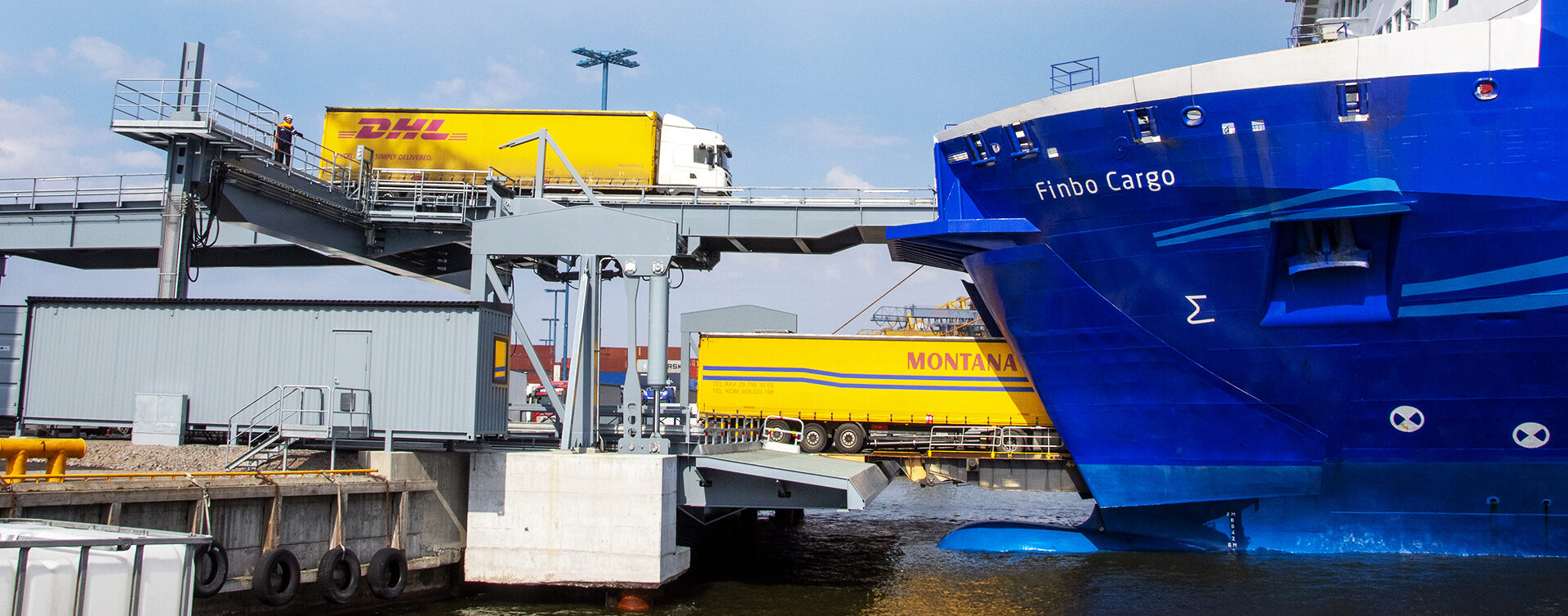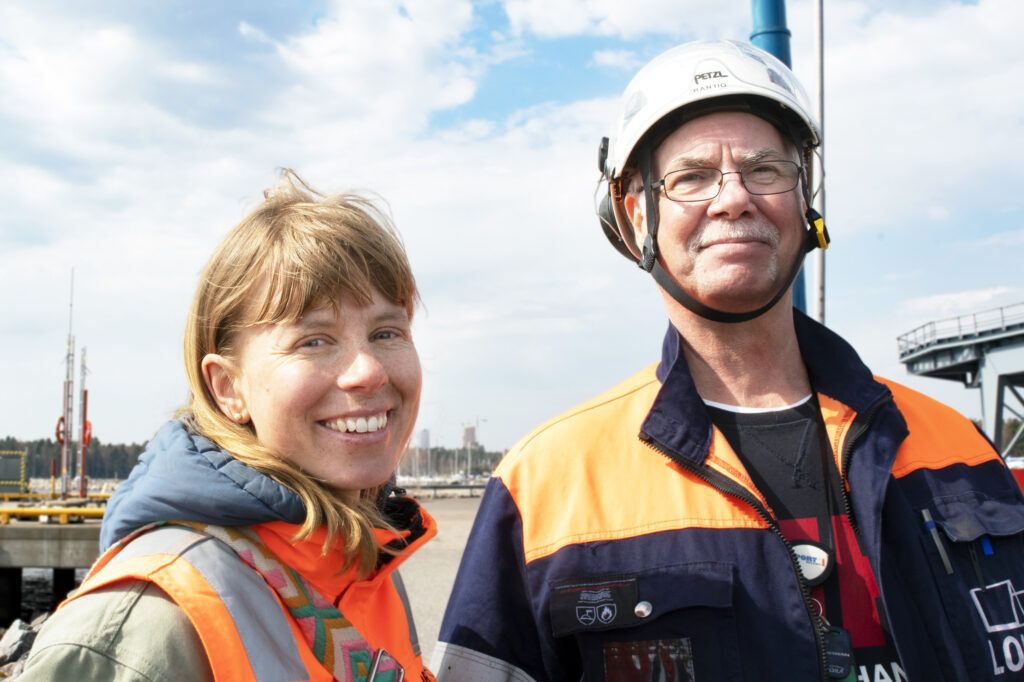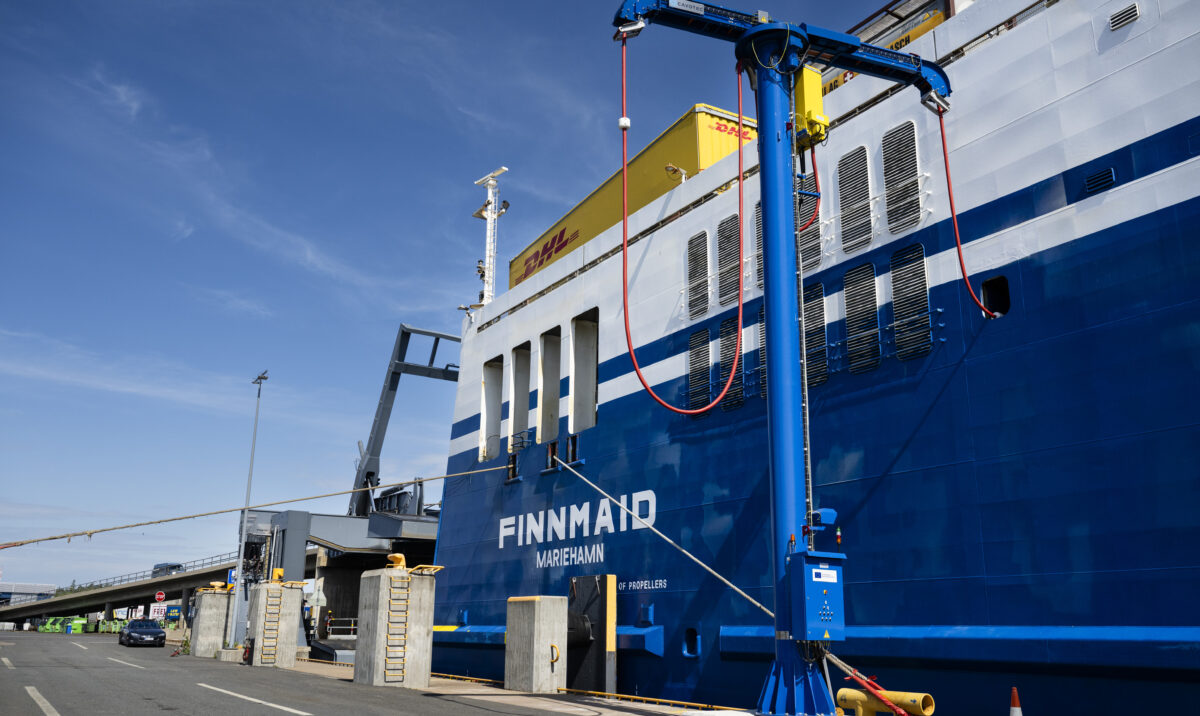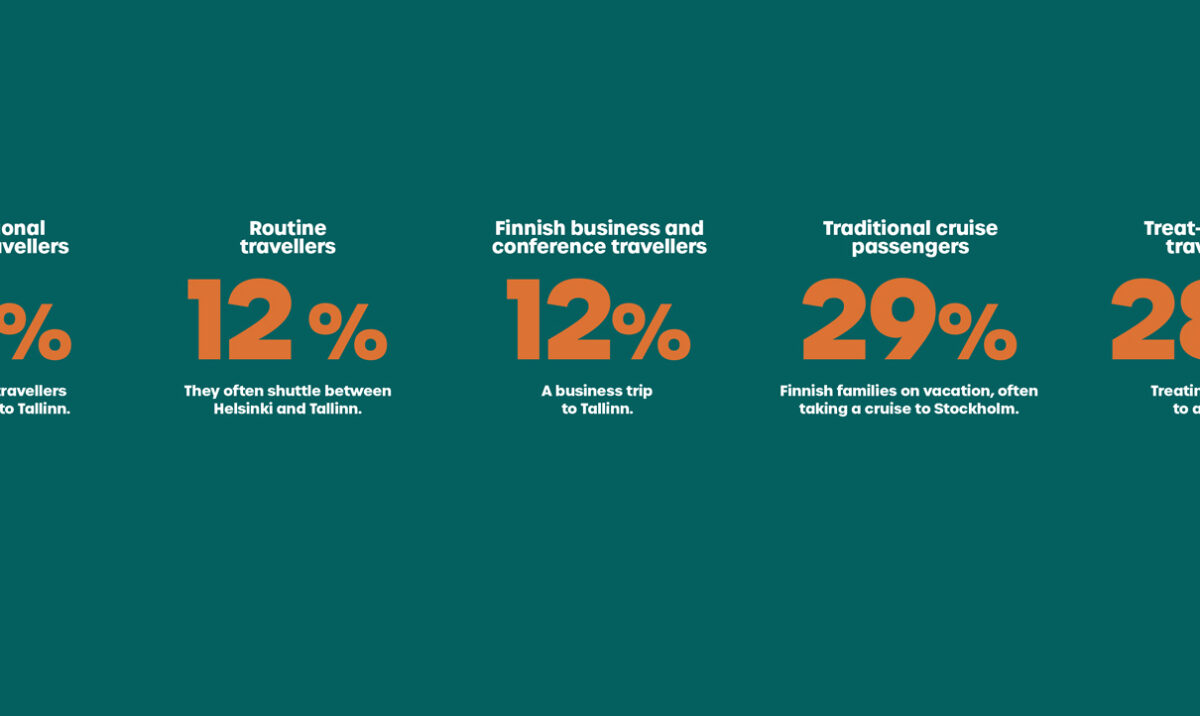
New dual ramp increases capacity on the Helsinki–Muuga route
Vuosaari Harbour introduced a dual ramp for berth VA8 in April. The ramp was built for ropax vessels sailing from Helsinki to Muuga in Tallinn. It speeds up vehicle loading and significantly reduces turnaround times for port visits.
Shorter loading times enabled Eckerö Line to increase Finnbo Cargo’s daily departures to Estonia from two to three.
The construction of the dual ramp is part of efforts to streamline maritime traffic between Helsinki and Tallinn, and to develop the Trans-European Transport Network (TEN-T). There is a similar ramp at Muuga Harbour.
“In fact, they used our ramp as a model,” says port engineer and project manager Sanna Supponen.
Project planning began in 2019 and construction work was launched in March 2021. Lohkoasennus Oy, a Finnish company that specialises in port structures, supplied the steel structures. Foundation construction was handled by E.M.Pekkinen Oy.
“The ramp should have been finished last year, but the pandemic, the market situation in the steel industry and technical challenges all delayed its completion.”
The sturdy dual ramp can carry 74 tons, and its pile foundations are attached to the seabed at a depth of more than 20 metres.
“The water level was occasionally very high while we were building the foundations, which caused some difficulties. There were also a lot of cables in the quay area that had to be moved or avoided.”

A rising section, which acts as the bridge for the dual ramp, was built on top of the seabed pile foundations. The ramp has a mechanical end flap that is controlled by hydraulics.
“One special feature of this end flap is that it can also be moved horizontally. We’re therefore prepared for any changes in the location of vessel bows. It also allows us to react to challenges posed by weather conditions.”
A large number of companies from various sectors were involved in the design and construction of the ramp.
“We needed expertise in geo, structural and traffic planning, and also in construction, automation, hydraulics and electricity. We consulted maritime professionals in the design of berth fendering in particular.”
Automation has also been employed, and the ramp has cylinders on both sides that are used to adjust its geometry.
“The cylinders are equipped with sensors that transmit status or alarm data to the automation control system.”
Its structural design took strong gusts of wind, snowy winters and slippery conditions into account.
“The sloping section of the bridge has a latticework structure, and the short land-based section can be thawed with electricity as necessary.”
The installation of the dual ramp was supported by the EU’s TwinPort4 investment project.





